We left Maupiti in the morning around 0800 on September 27th, to go out through the pass in low swells and it was well timed. 700 nm was awaiting us, going to this magical place in the middle of not so much, with only two inhabitants for six months of the year – 2 rangers. Harry and John are local rangers in the Suwarrow national park, which looks after the park, are immigration and customs officers and are just very nice to meet. We brought them tea, wine, some meat and a few other items, as they only have the provisions they bring. On top, we knew that their freezer had broken down. Check in procedures was casual and easy. No-one cared about the early arrival warning, you are suppose to email to the authorities.
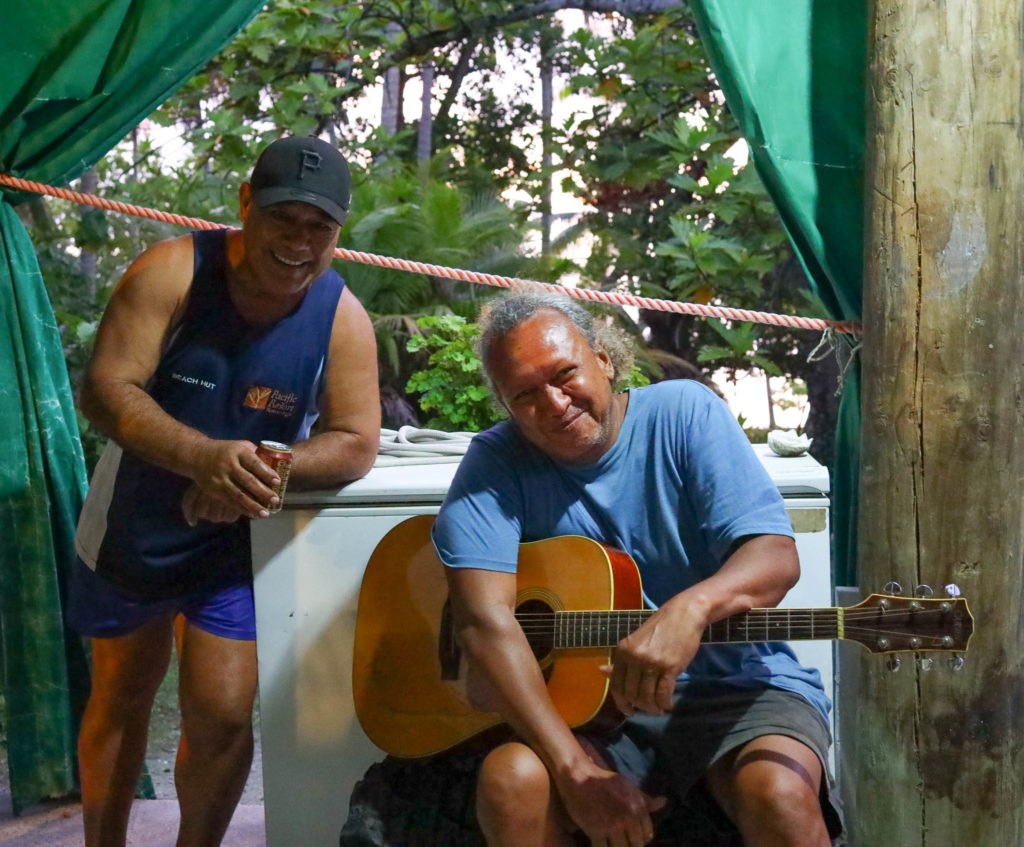
As we got to know them, they went out fishing and made a very nice potluck, with several different fish. Black Jacks, Tuna and a few others. Simon was fishing with them and caught 6 larger fish, in less than 2 hours.
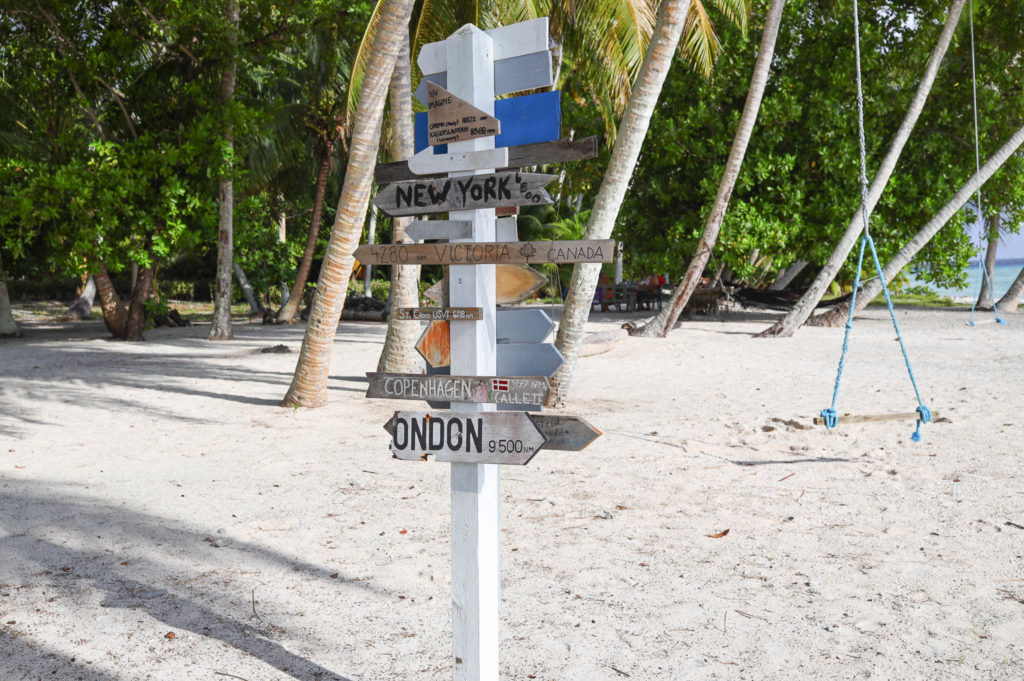
Suwarrow is known as Tom O’Neals island. He lived there as a Robinson Crusoe, but by his own will for mostly half his life – and wrote a book about it. When we arrived, we did understand why – it is one of these very special places. It is safeguarded from tourists, because it is impossible to get there, except if you sail under your own keel. The sea life is in abundant and the solitude you find is amazing. But living there for many years – that is probably to push it a bit too much for us.
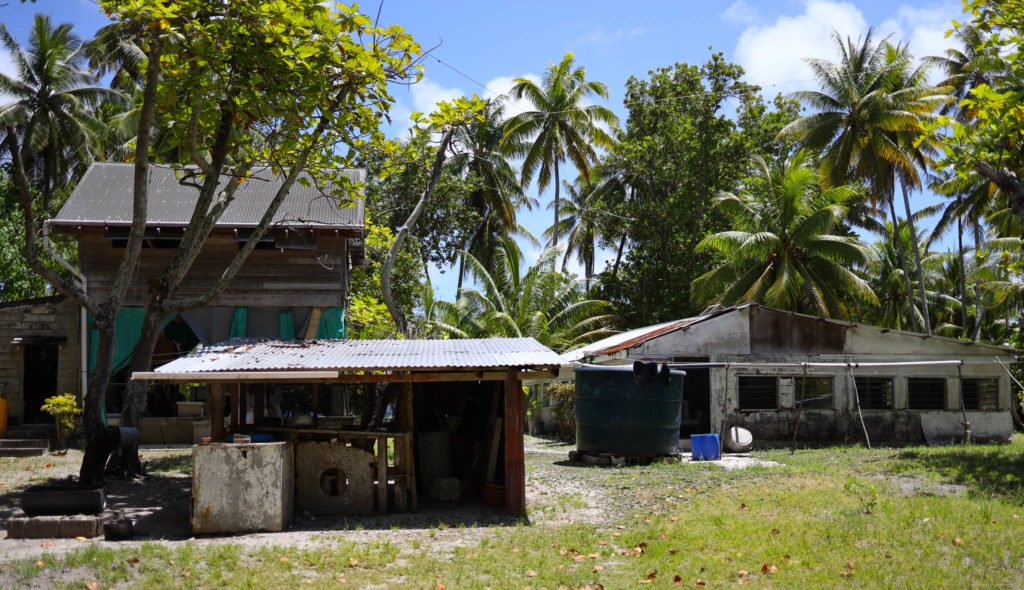
As we went through the Suwarrow Pass on September 23 in flat seas, we were met by two Humpback whales, and the tone for our visit were set. We snorkelled and saw beautiful corals and many fish, but we missed the huge Manta Rays, which also lives here. There were also plenty of sharks, to disturb our attempts to clean the bottom, before we sailed further. I was ready to jump in, but Marie was cleaning a plastic bag with a little fish blood and it was running out of the kitchen drain. The result were that 7-9 sharks were camping around North Star, waiting for more! We only cleaned the hull the day after…
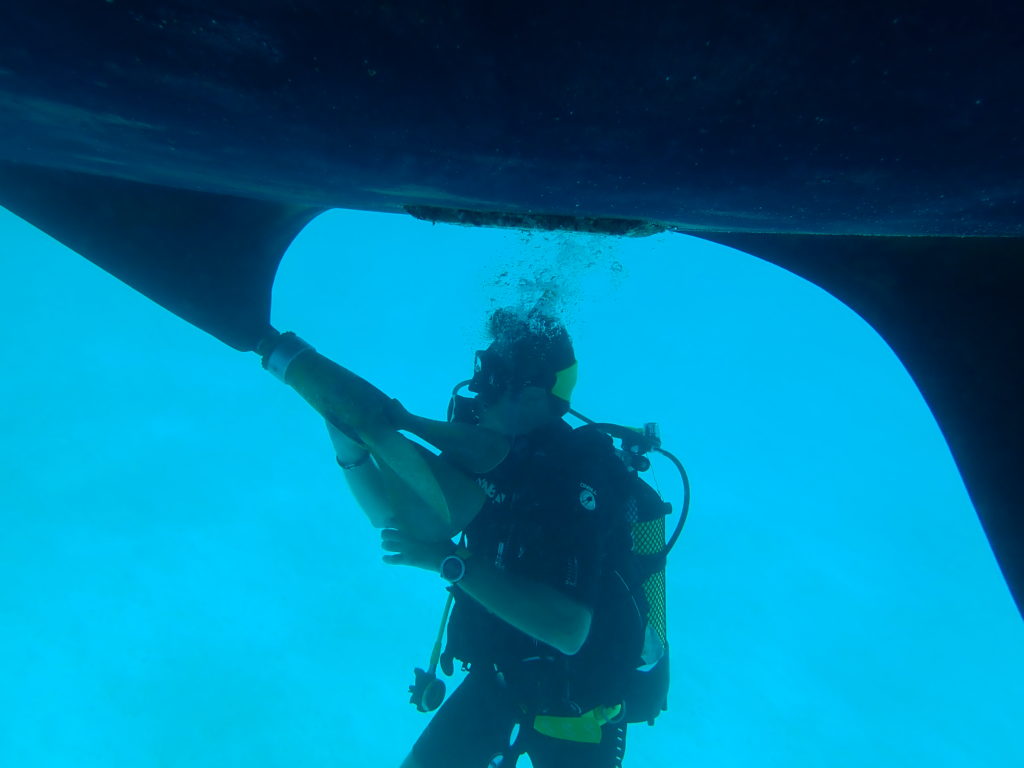
There were really nice people in the small anchorage, far from the world. Greyhound, Nomad, Serenity, Anna Isabel and us. All people we had met before, during our crossing and will meet again en-route to New Zealand. We all felt pretty excited about our travels, but I have to say, some have more courage than we others. A young couple on Anna Isabel from Portugal, are heading for the Solomon islands, north of the hurricane area, and then further North. Talking about going deserted places – Micronesia and the Solomons are not on the Milk Run. Brave they are!
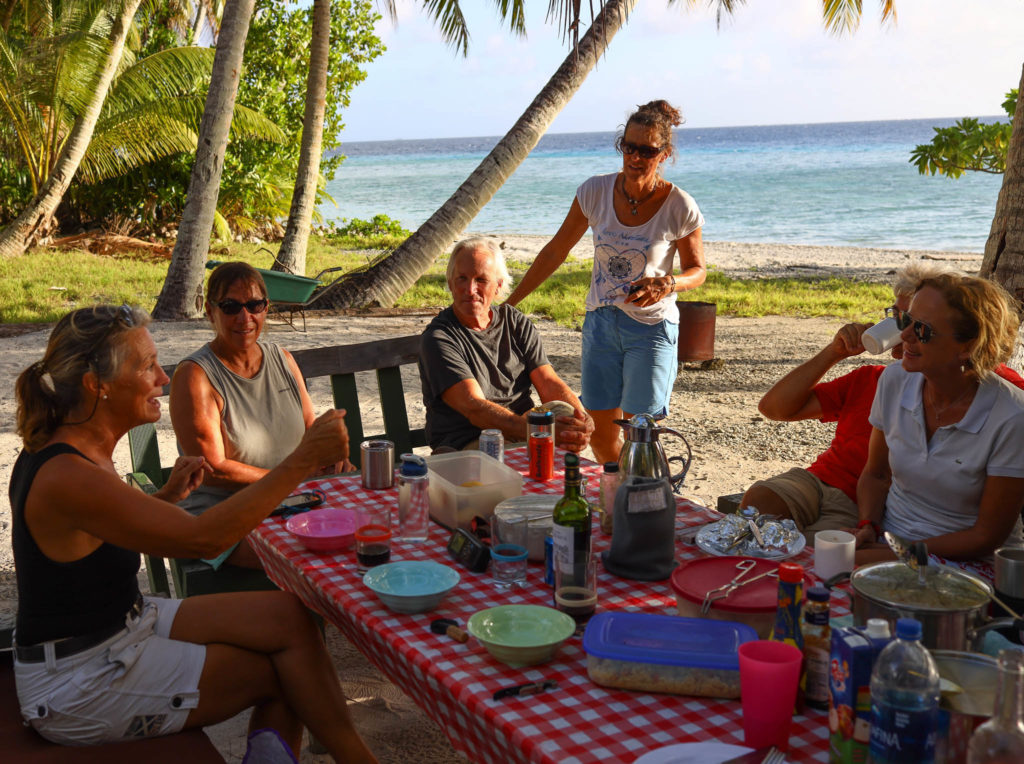
Some would say, that the crowds sailing the Milk Run around the world are increasing, and they are. But if you are in this for the solitude, there are still more deserted places to experience!
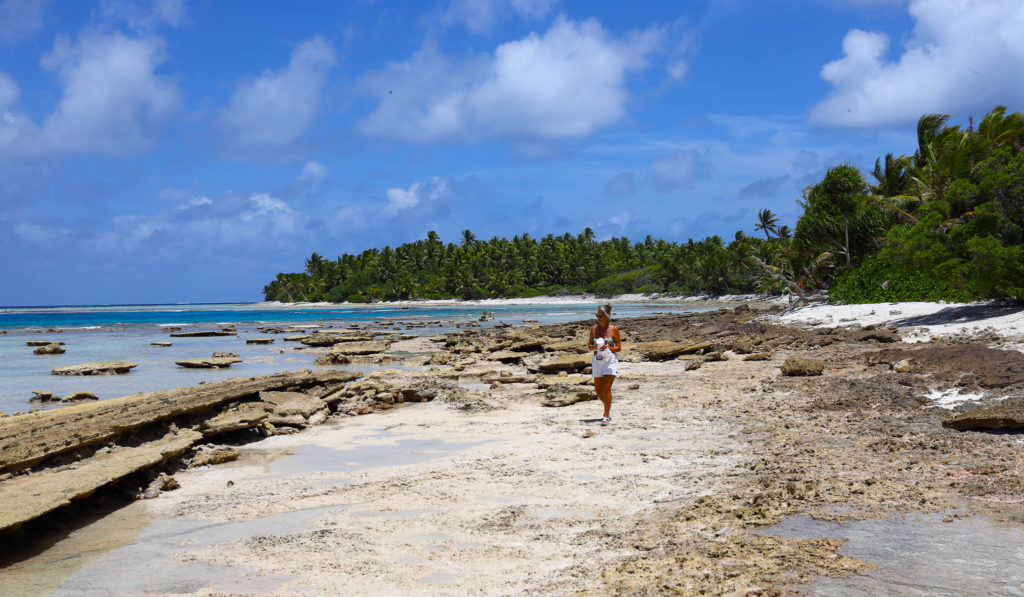
On the morning of the 27th, we left at 0900 with Greyhound for Niue and the 500 nm passage, with a very pleasant forecast of 15-20 knots on the beam. It means 3-4 days at sea, before we reach Niue and we hope they will have a couple of free moorings for two tired sailing crew. From there, it is small hop to Tonga of 230 nm and then another 200 nm down to the southern end of Tonga. There we will wait for a weather window to NZ and prepare the boat, for this last sometimes challenging crossing of 1050 nm.
We arrived after exactly 72 hours and 512 nm on October 4th. We were racing on a beam reach for the first time in many, many months. It was great to feel the sails again, after so much downwind sailing.
Niue is a fantastic island. The smallest island state in the world, with only 1600 residents on the island and plenty of them have been buried along the roads or in their relatives back yard, as is their custom. 42000 of them are living abroad.
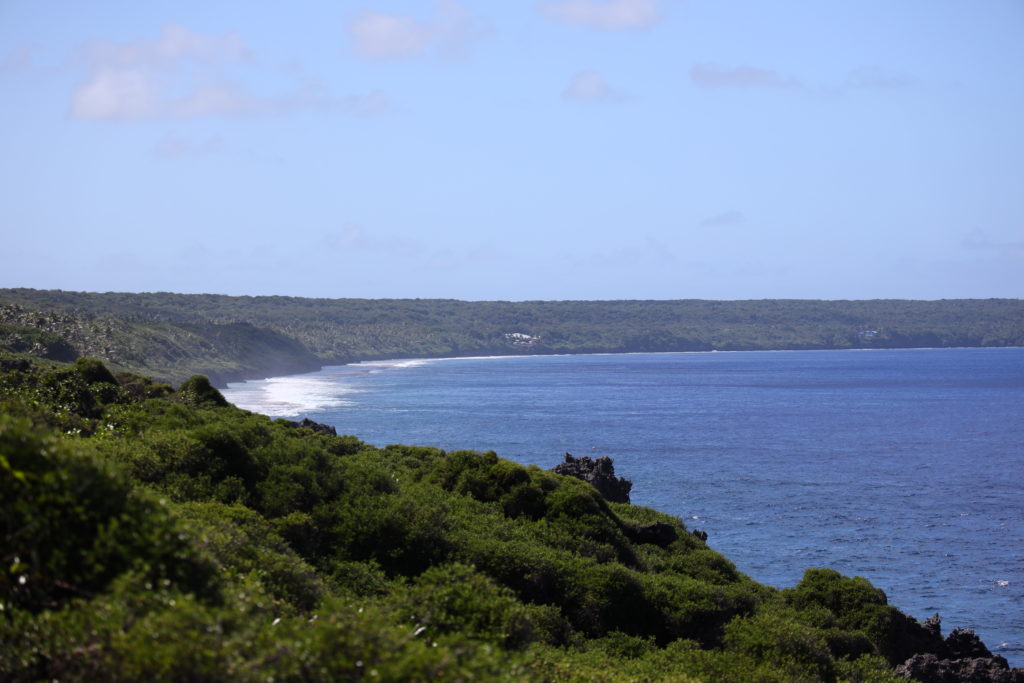
As we arrive into Alofi bay, we did contact Niue radio and announced our arrival, as we did to Brian. He is at the local yacht service, and acts as taxi, social gathering place, help with many questions and of course the mooring service, which cost 25 NZ a night.
Niue is a very big rock of limestone and coral. We moored in Alofi Bay, which really is the only place you find protection from the easterly swells. And the wind is easterly most of the time, until it changes and then you have to move quickly! Here in the bay, the island community have mounted 12 moorings for the approximately 180 yearly visiting boats. Maybe a few of the sailors, which are going west across the pacific does not stop here, but it says something about how lonely you are in these waters.
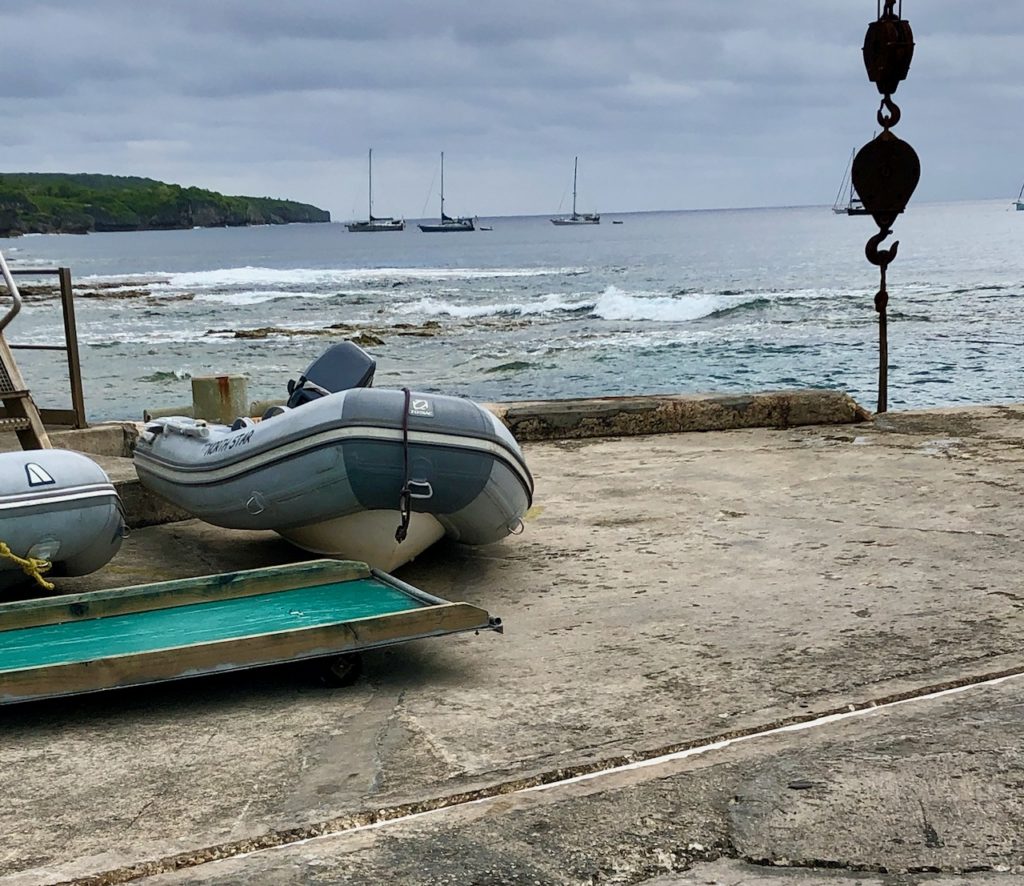
We found a very nice mooring, close to the wharf and the dinghy hoist and announced that we had arrived. As Monday were a flight arrival day, we had to await customs and immigration, but after a couple of hours of rest, we were called on the radio, that they would await us on the wharf. So no visits to the boat! It went easy and we received our 30 days visa on the spot.
We rented a car for two days, and that was about right. There is a lot to see. The first day the only available vehicle was a small bus. So we rented that and filled it with yachties and we had wonderful days touring the island. We were shopping in the duty free liquor store, participating in a potluck in the yacht service office, where we met some of the other boats in the bay.
We visited a number of the “sea tracks” and these are shorter or longer beautiful hikes, which often takes you down to natural pools along the coast or to beautiful limestone caves, through a tropical forest. For two days we hiked and swam, we saw beautiful corals and lots of fish and just enjoyed Niue.
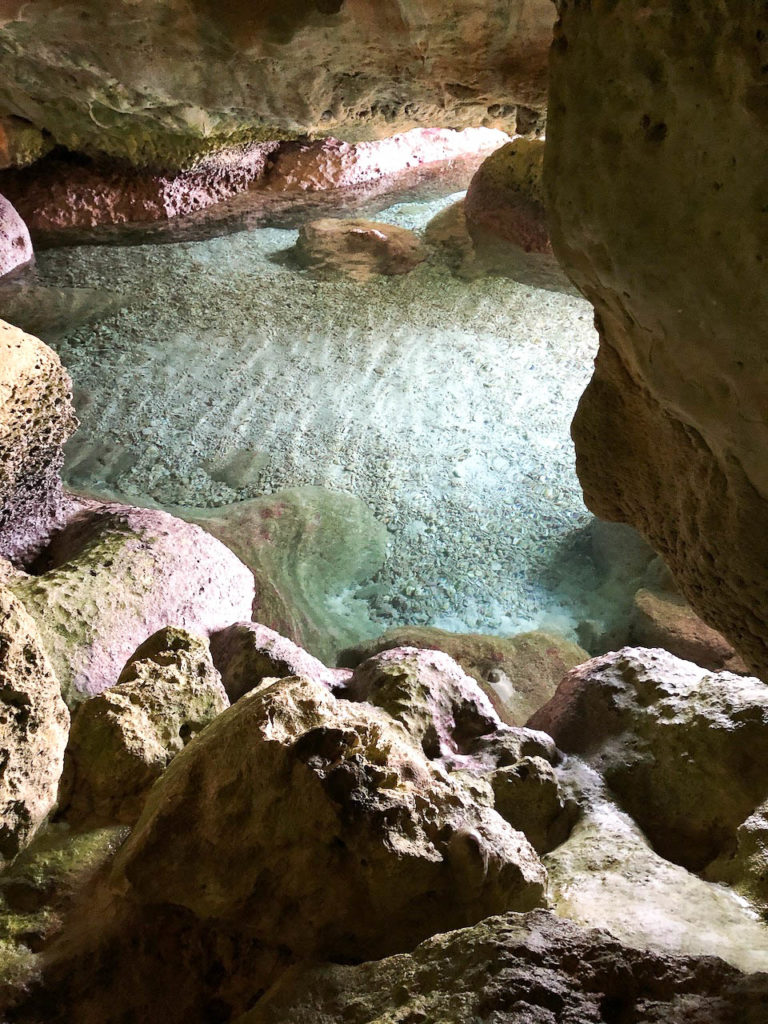
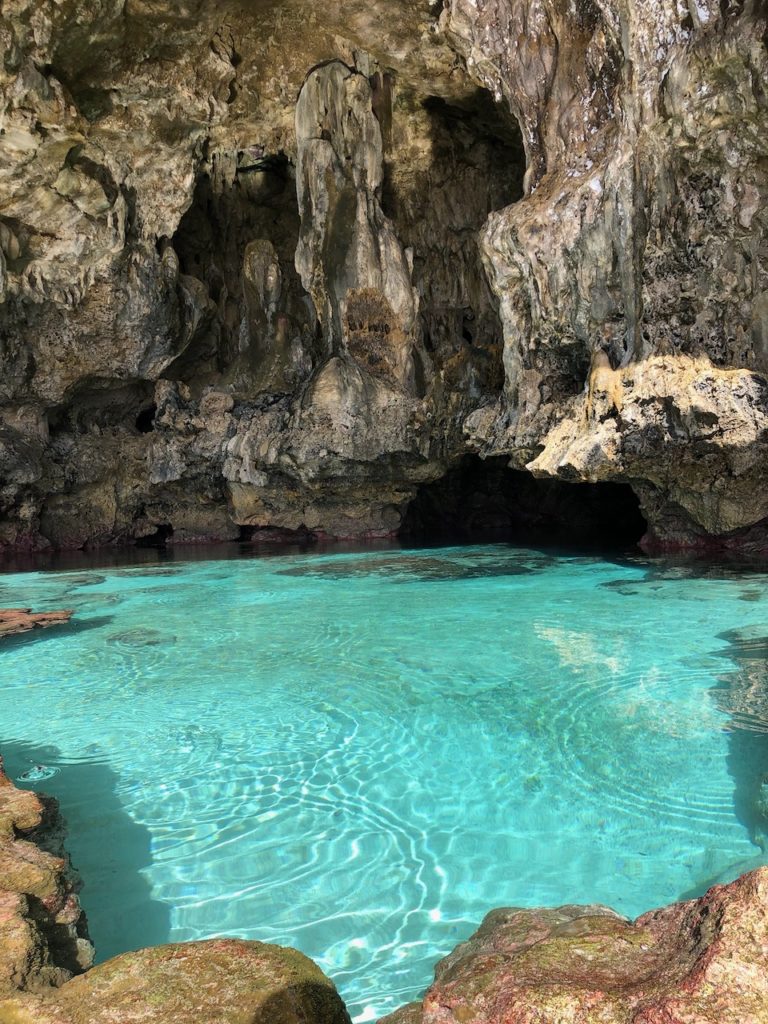
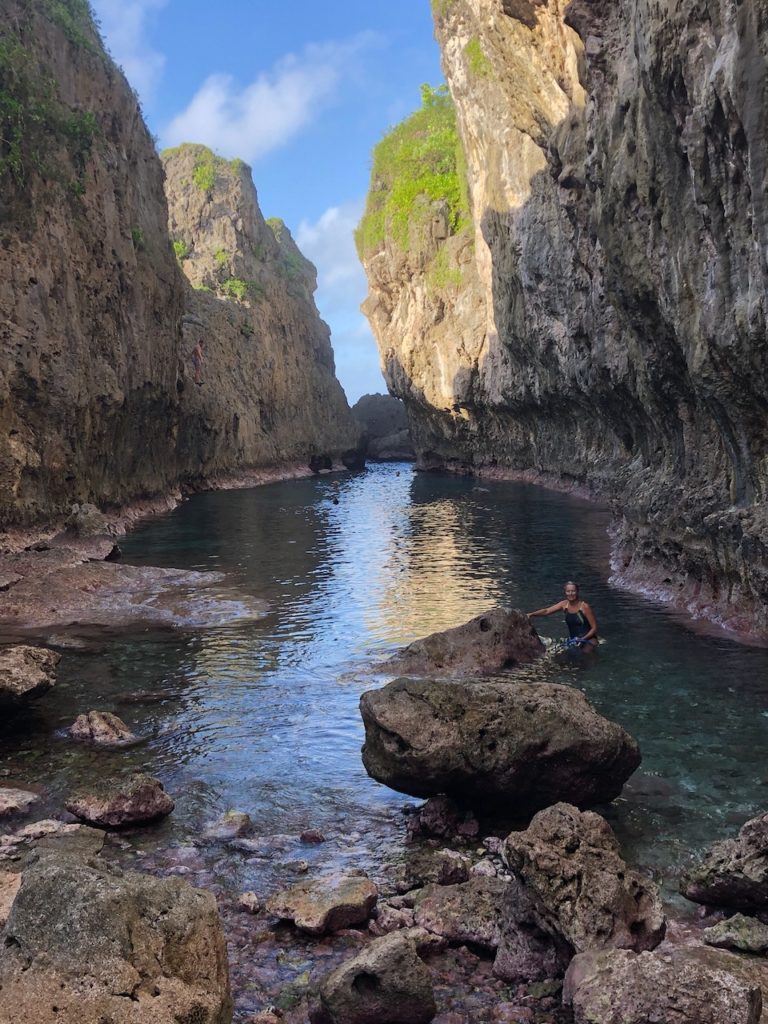
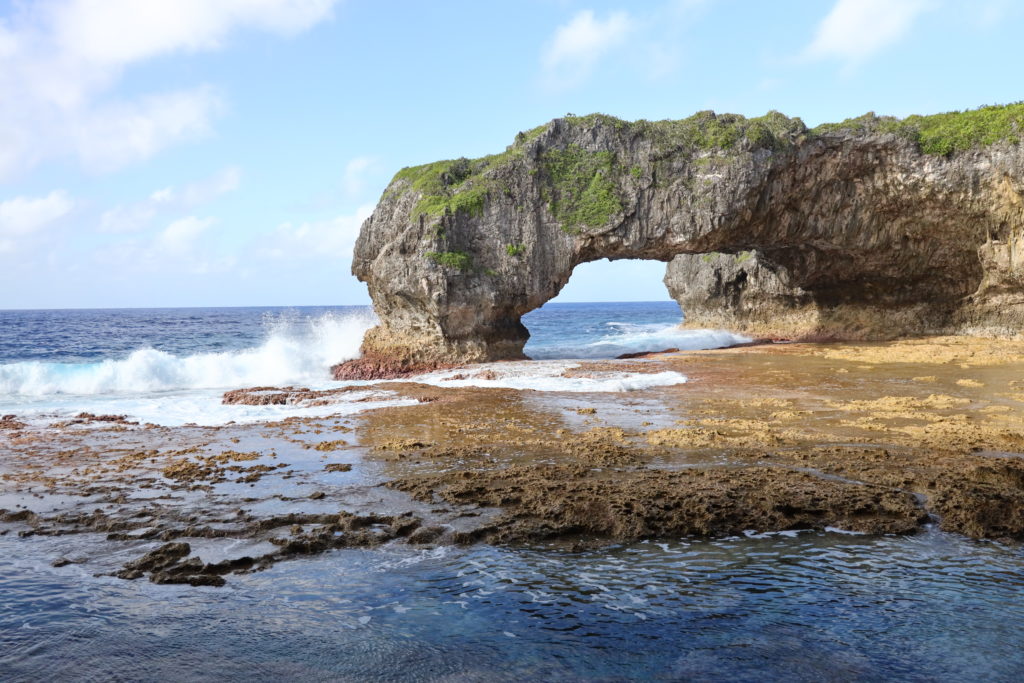
On the third day we had booked Niue Dive and they took us out on two cave dives, where we visited the underwater caves and enjoyed the coral gardens. In these waters, you have a 70 meter visibility, so the clarity and light underwater is unmatched to anything I have ever seen. Take a look at the pictures, we hope you will enjoy.
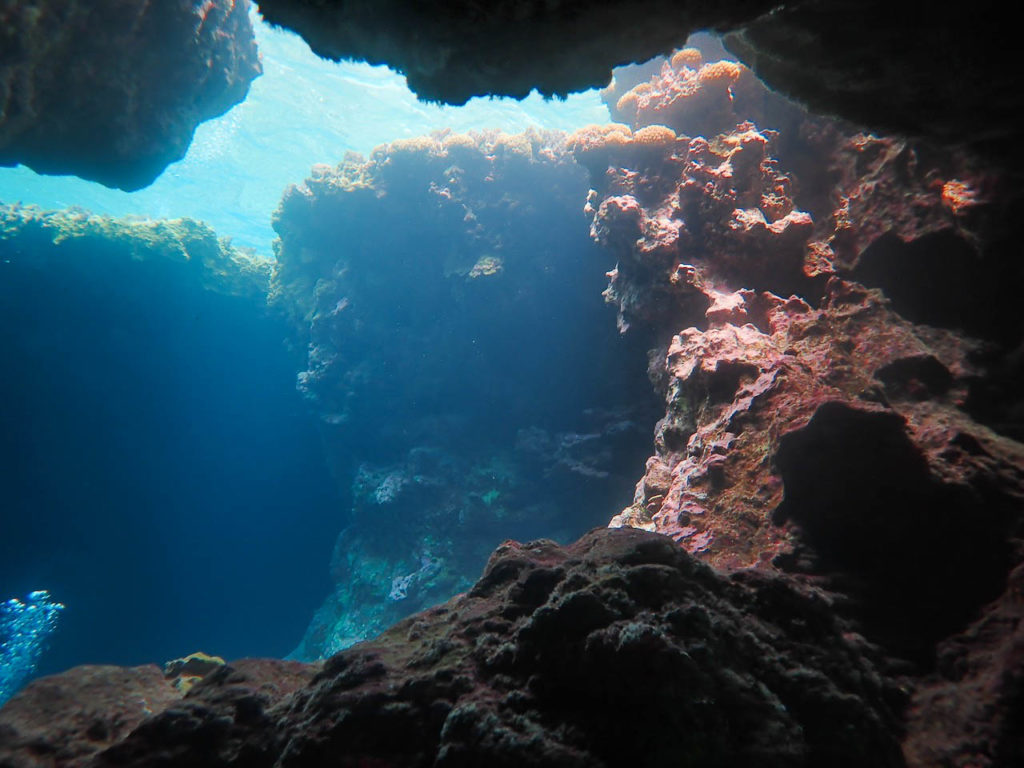
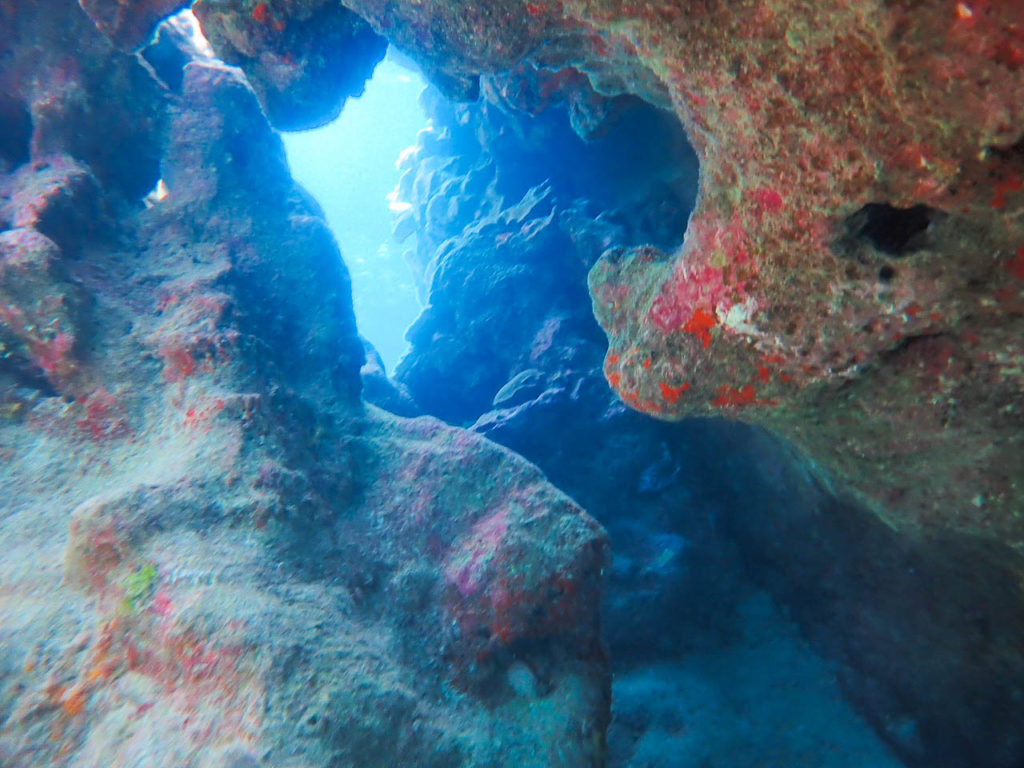
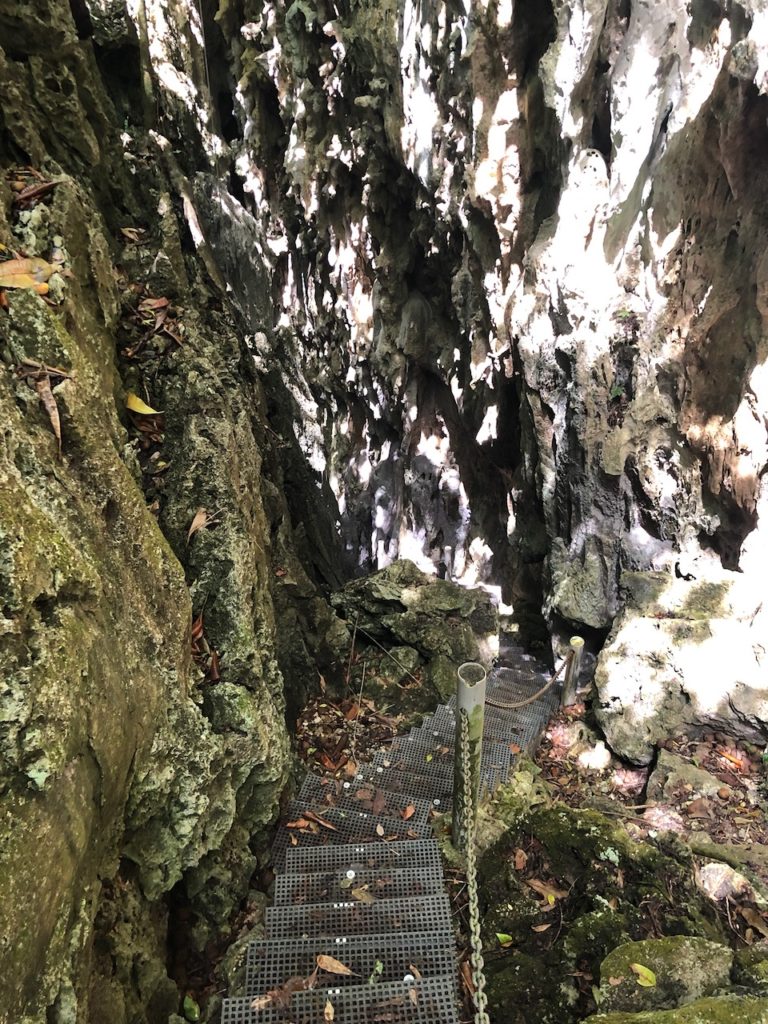
Our last day Friday, was spend relaxing in town, enjoying the free sausages from the local bank, which celebrated a customer day and just wondering around chatting with the local people, trying to understand life on Niue. It is a mix of Polynesians and New Zealanders. The island is highly associated with NZ, as the economy is 100% dependent on the subsidies from down south. Unfortunately, also on this island, the Chinese have found their way and all the local roads are now being maintained by the Chinese, in return for fishing rights and more!! As said before, it is disturbing to see firsthand, how we leave the world to the Chinese. I am sure they are building for the future and maybe their motives are not only to help.
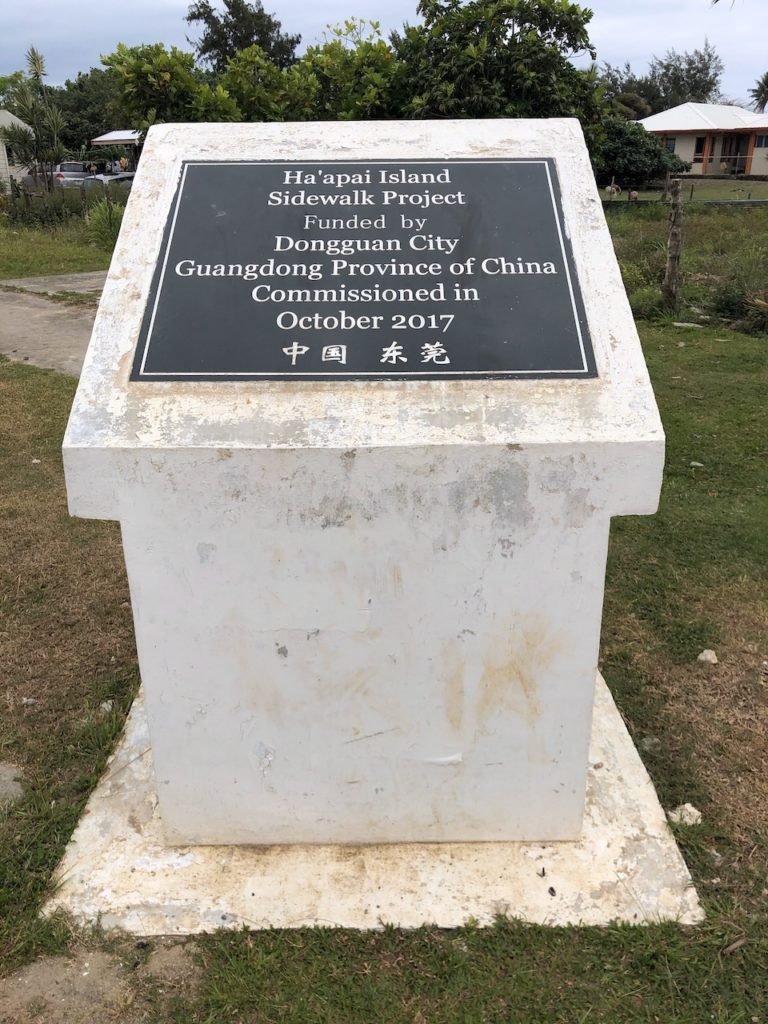
We left Niue rather late in the day on October 6th, to arrive at first light in Vava’u in Tonga. We had to sail around and between the islands from our first landfall into the harbour of Neiafu, about 20 nm, in a beautiful Halong Bay like scenery. Low islands with lots of green and many caves created by the almighty Pacific.
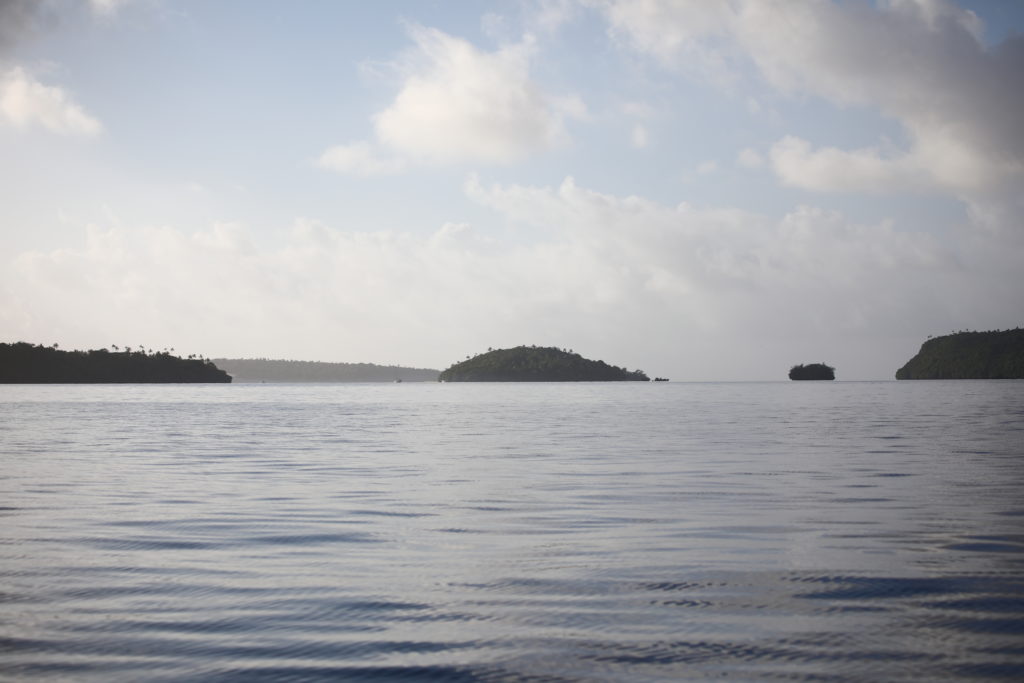
Vava’u is protected behind a barrier reef from the east and is a wonderful flat water sail – it reminded us of our many summers in the Swedish archipelago. It was fantastic to feel that North Star was going to wind, heeling over and taking speed.
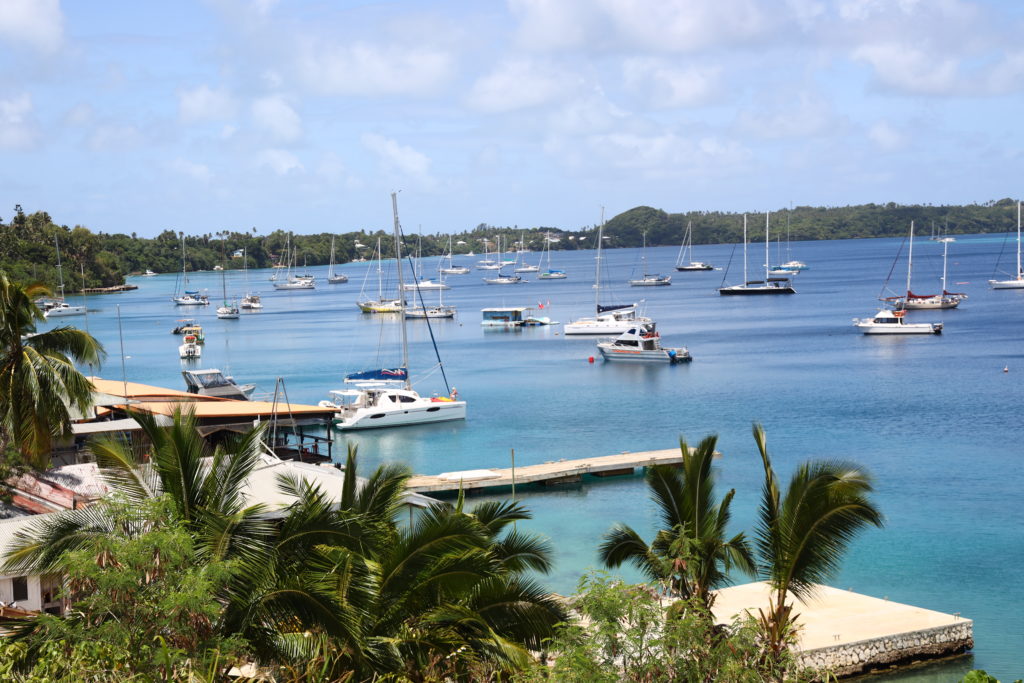
As we arrived into the bay of Neiafu, and checked in with custom and immigration, we saw the more than 30 boats on moorings or anchor in the bay. We realised that this was the kind of peaceful anchorage, near some civilisation, we have been longing for. We felt that we had crossed the Pacific. We arrived safely, with just the small southerly stretch of 1300 nm to NZ remaining, and we would worry about that on a later day.
We did not do much, except eating out drinking beer and celebrating. One thing to mention, is that we celebrated a 73 year birthday – also a cruiser who have sailed from Europe and crossed oceans – and we felt tired! I am full of admiration and I am sure this life style keeps people younger!But we did swim with Humpback whales, for a few hours. They are 15-20 meter long and here in Tonga the mothers swim with their babies. (4-6 meters long.) We could include many pictures of this extreme experience, but we had to choose 2.
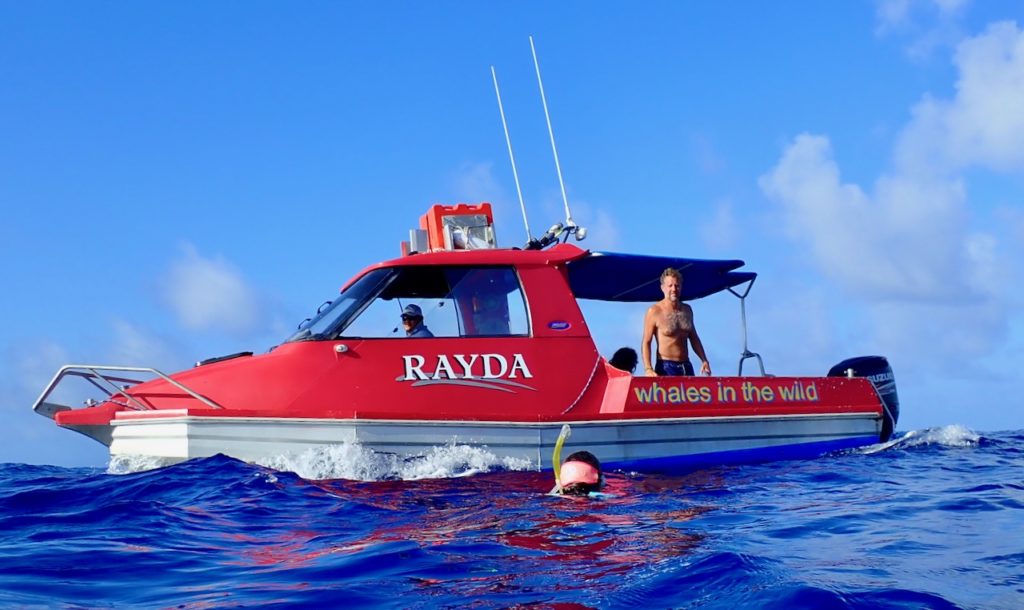
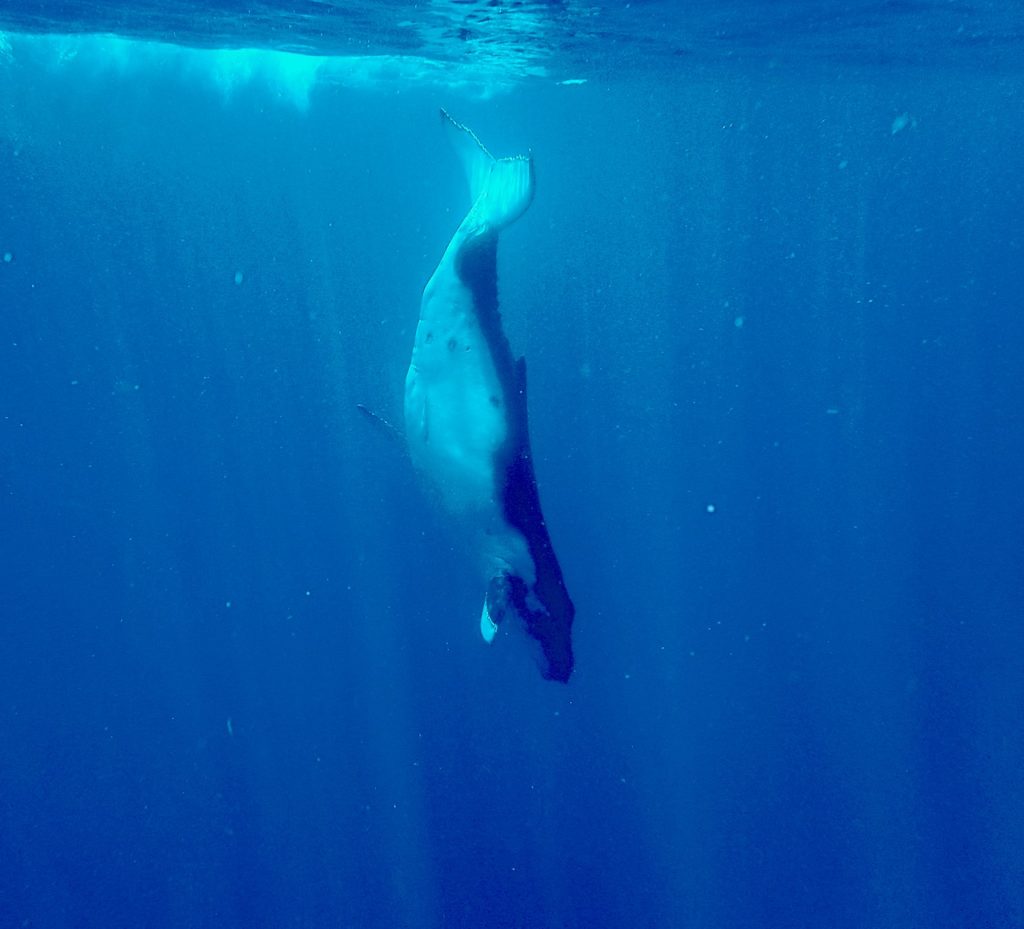
Tonga is one of the oldest Kingdoms and they are a very poor kingdom. The king was autocratic until a few years ago, and the royal family still owns all land. In later year tourisme have started to increase slowly, but it is difficult to attract the bigger hotel chains, because of the land ownership. We enjoyed this, but cruisers are not increasing the living standard of the happy and smiling, but poor people.
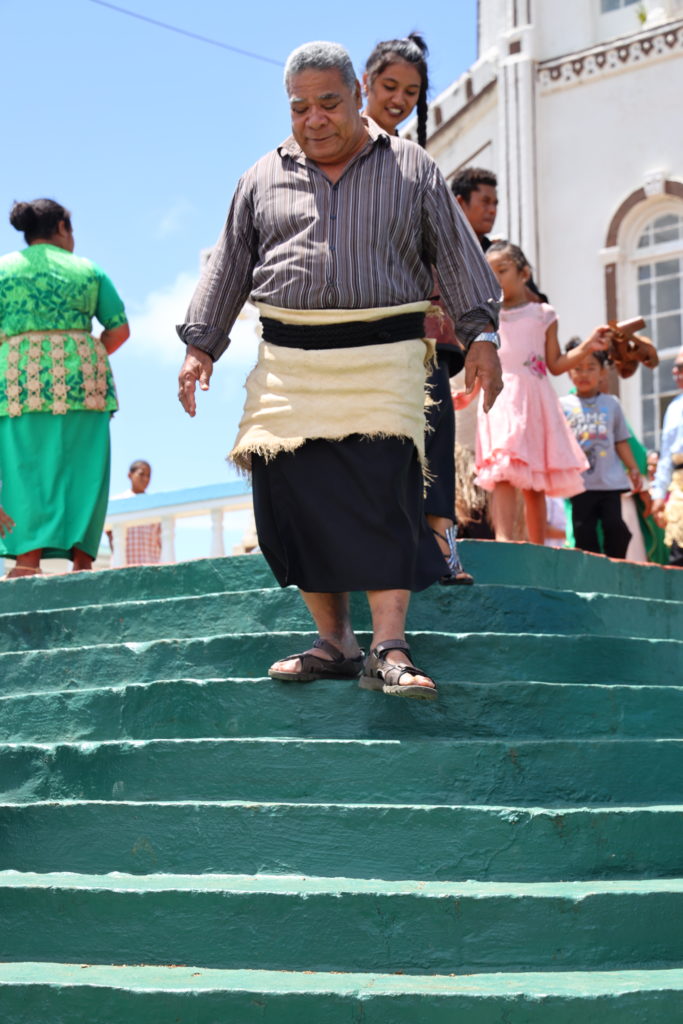
After a short week on a mooring, we checked out for the Haapai islands and spend a few days snorkeling and hiking in the wonderful island group of Vava’u. Too short, but as we expect to return in May 2020, after the hurricane season, we did not give it the time it deserves.
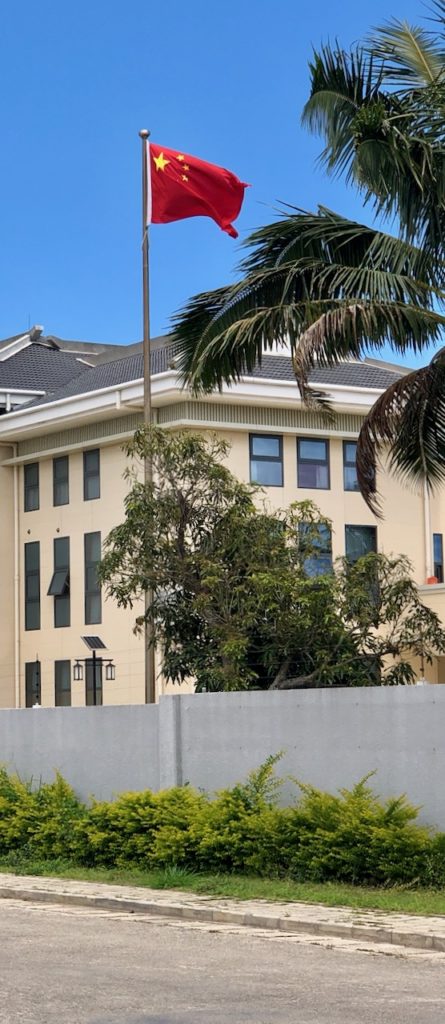
The immigration process is quite relaxed in these island, but you have to check into each island group you arrive into. And so we checked into Panghai and the capital city of Nukualofa. Neither of them would be a great miss, if you skip them, but the islands in the Hapai’s are wonderful and a thorough catch up, if you felt you had spent too little time in the Tuamotus.
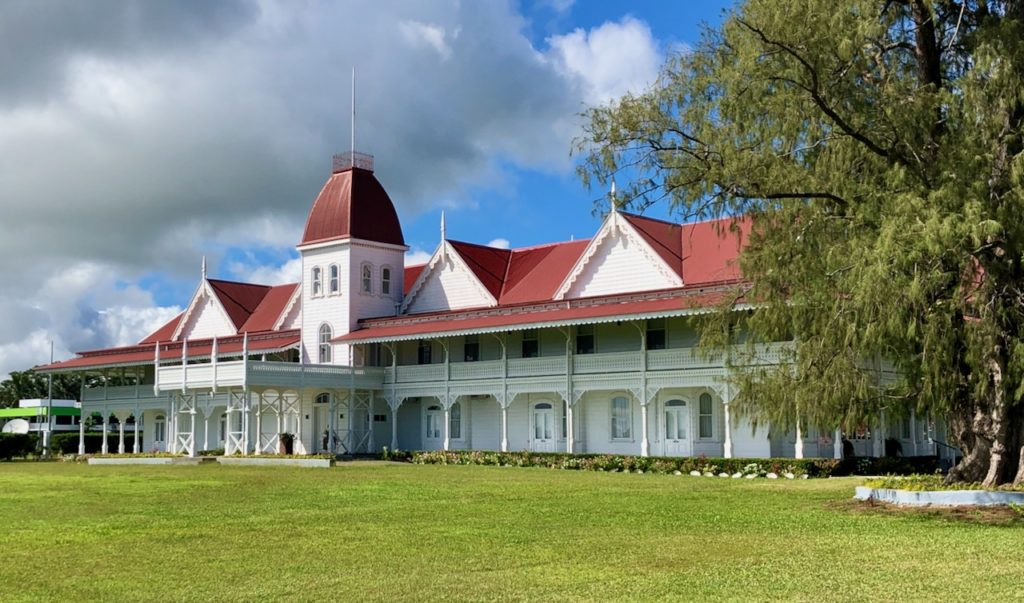
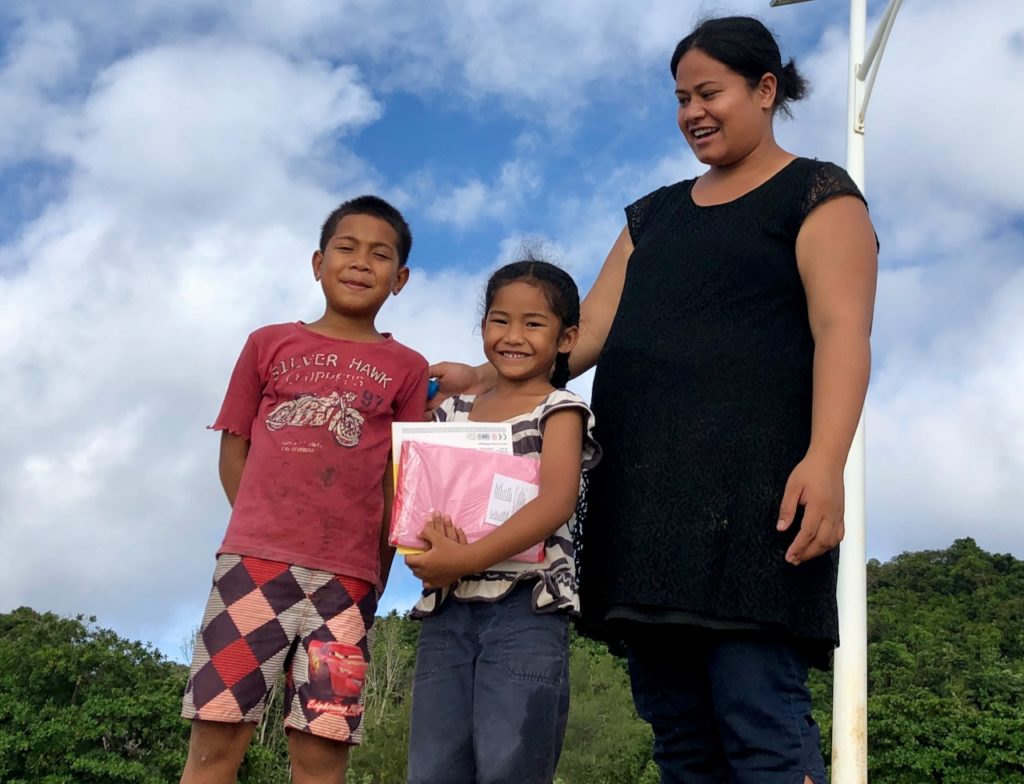
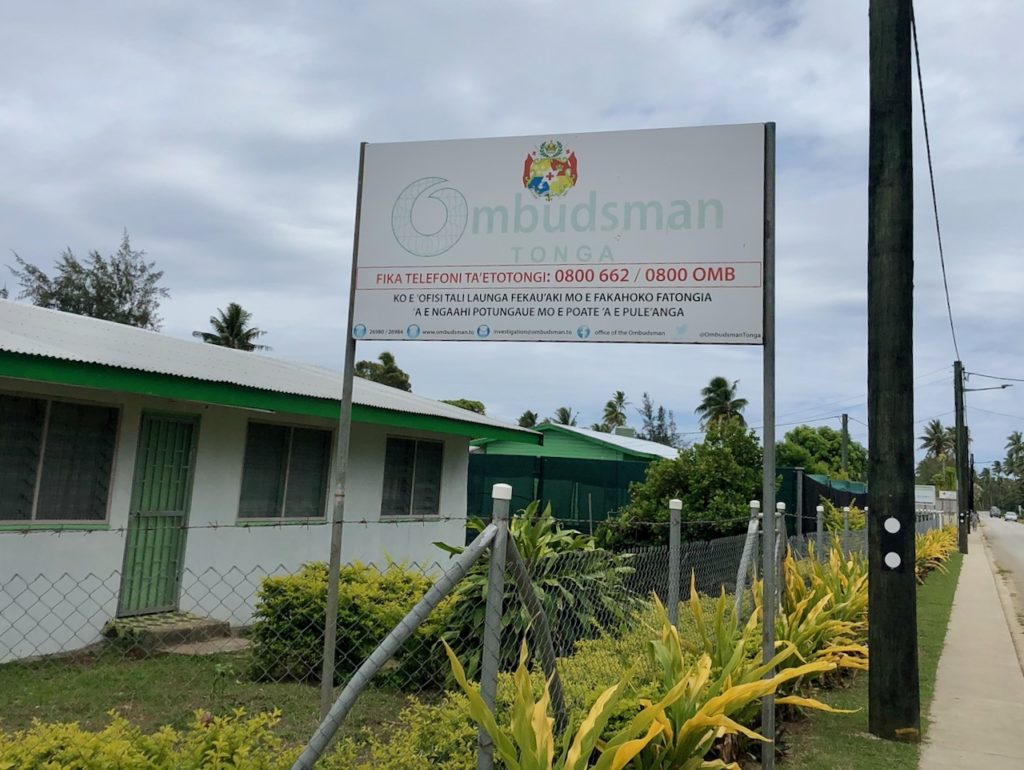
Early November we arrived into Tongatapu and anchored together with 10 other boats outside Big Mama’s restaurant and yacht service. All 10 yachts, were just waiting for the right weather window. We were all trying to get out of the hurricane area, which starts in late November and for all of us it meant 1200 nm due south towards Opua in New Zealand and the Southern Ocean. It is the passage, which has the worst reputation of all. Probably only matched by the sail from Madagascar, down around Cape of Good Hope. Both are close to the southern ocean and known for fast moving lows and closed isobars, which you really want to avoid. So we were duly warned and was somewhat observant on the weather!
We decided to go, as the first window opened to sail to Minerva reef. This is only 250 nm south and there we would evaluate, if we should wait until the next window or go.
The ideal we all are waiting for, is a big high pressure around 1020 to 1025, moving slowly across from West to East and then leave anchorage in brisk winds of 20-30 SE on the nose for the first days and sail more to the west than needed. Then as the high move further east, the winds would settle and allow you to go south and finally disappear the last couple of days, as you approach the last dangerous stretch down from 30 S – 173 W, to the North Cape of New Zealand. Then you would motor into Opua or Whangarei. That at least is the theory!
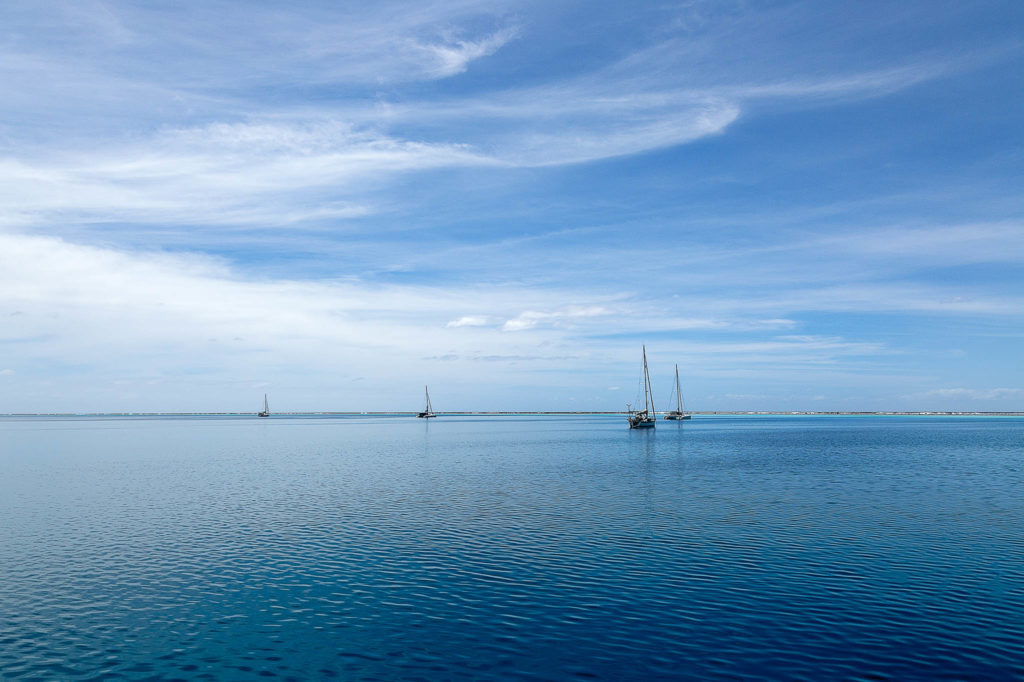
As we came into North Minerva Reef and saw the 20 plus boats all waiting, we could feel the impatient and the tendency to group thinking…We decided to wait one or two nights evaluating in this very special place.
It is difficult to take photographs, which justify the beauty, as this is a ring reef in the middle of the South Pacific – underwater at high tide. ( The pictures from Minerva Reef are taken by Michelle Marshall, she was kind to share them with me ). But you are literally lying on anchor in 15-20 meters depth and looking at the 2-4 meters of swell and waves, thundering onto the reef at low tide. At high tide, some of that break over the reef and makes for a rolling anchorage. During the days you swim with the sharks and dive on the reef for lobster and other fish.
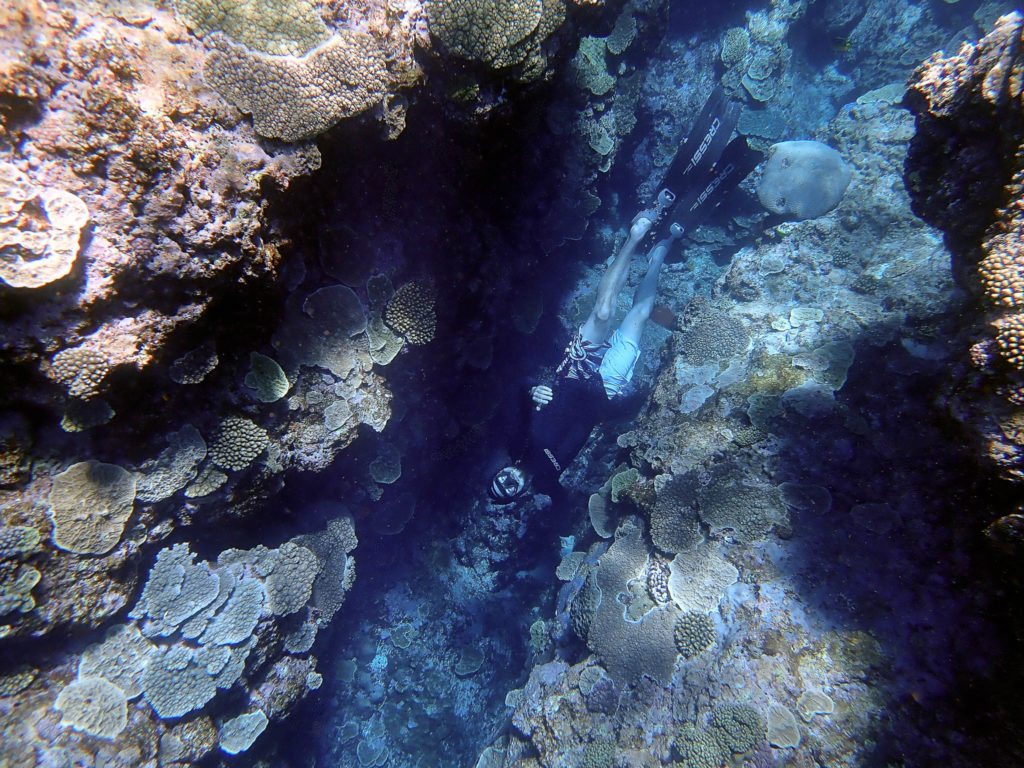
The water temperatur was down to 19 degrees from 28 degrees, up in the French Polynesian islands – so as we are moving south the swimming will be much less, until we migrate back next year. It actually proved, that this were the last time we swam, in the beautiful Pacific.
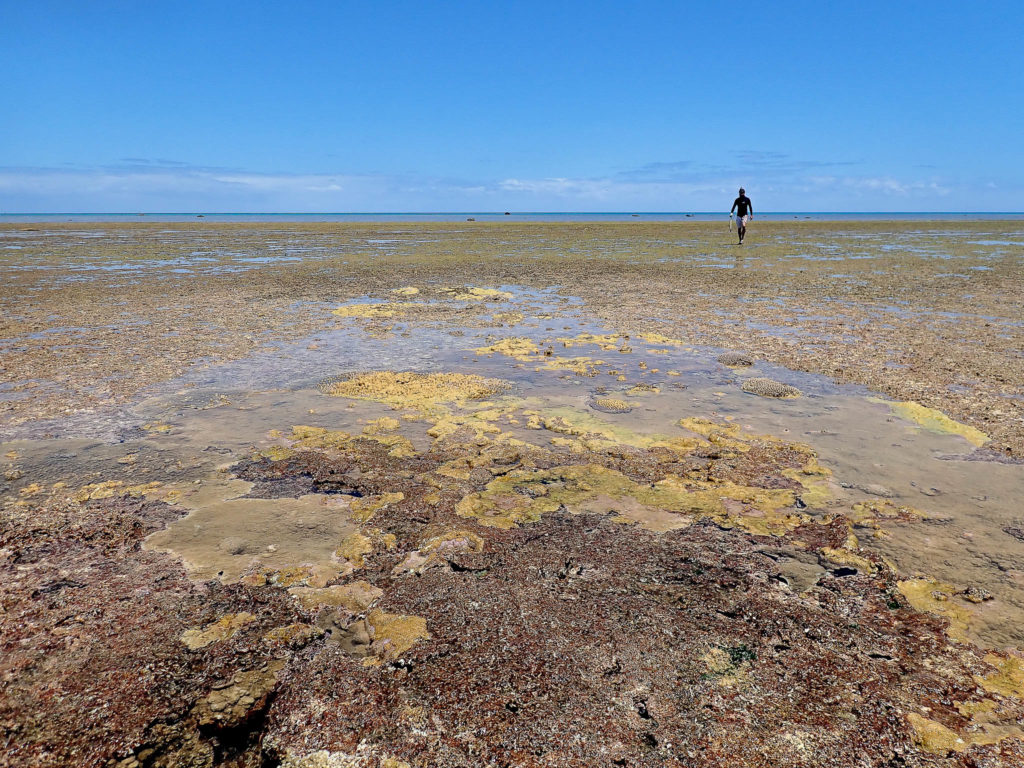
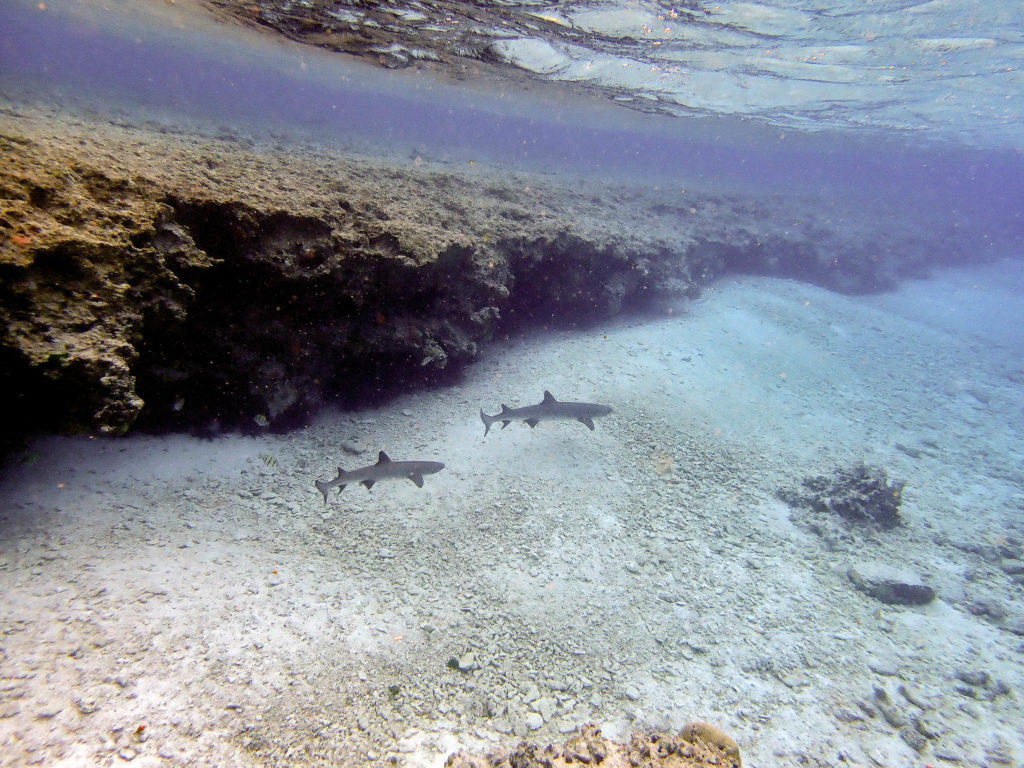
We woke the first morning and listen to a short wave station out of New Zealand, GOLF RADIO, who provides amateur weather forecast. This was then followed by a morning discussion at 1000 at VHF, between the boats on anchor in Minerva Reef North. To provide you with some inside in the difficulty of deciding when to leave, and the anxiety in the anchorage. Here are what was in the back of everybody’s mind.
First, we all new, that four weeks earlier a 50 foot Beneteau had sunk and one person drowned 38 nm North of Opua. They were sailing the same route, as we were about to do.
Second, all the professional forecasters including our own, recommended to LEAVE this morning – it is a good weather window and you will only be met with a weak through coming through, but nothing that will be difficult. GOLF RADIO said, do not leave, the incoming through will be much stronger than forecasted and there is sign of closed isobars up North towards Fiji ( 500 nm away).
North Star will never leave a safe anchorage, if we do not understand what kind of weather we will face out there. So the suspicion of the closed isobars moving down into our projected course, was enough for us to decide to stay put. 8 boats left and they had a wonderful sail the first 3 days and then they were hit by really bad weather for 3 days. It was never really dangerous, as most boats out here are well prepared, but very uncomfortable. Gold Radio were very right, the through turned out to be much stronger than expected, but hard to detect in the gribfiles, as these are notoriously known for being inaccurate out here.
So we waited and waited to the point that we started to discuss just to leave, and see what would happen out there. But we did not and finally after a week in Minerva reef, 14 boats left mid morning to a 20-28 knots ahead of the beam sail, for the first 2 days. We did not eat much, but we moved south west, sort of in the right direction with 170 miles a day – as good as it gets down here. Then as the High Pressure 1025 moved further to the East, the wind went into East and moved us onto a comfortable sail due South for a day or so. The last 48 hours, we motored and arrived into Whangarei after 5 days and 20 hours, about 18 hours later than the first boats. We were lucky, we found our stable high and it behaved as forecasted. So finally we arrived into New Zealand, after 3 years and 6 months, after a life changing journey.
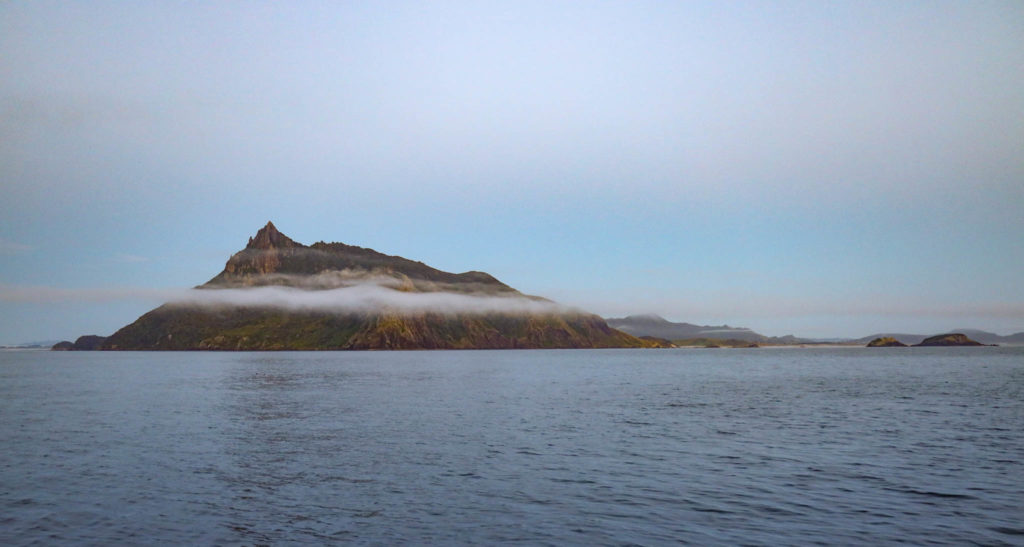
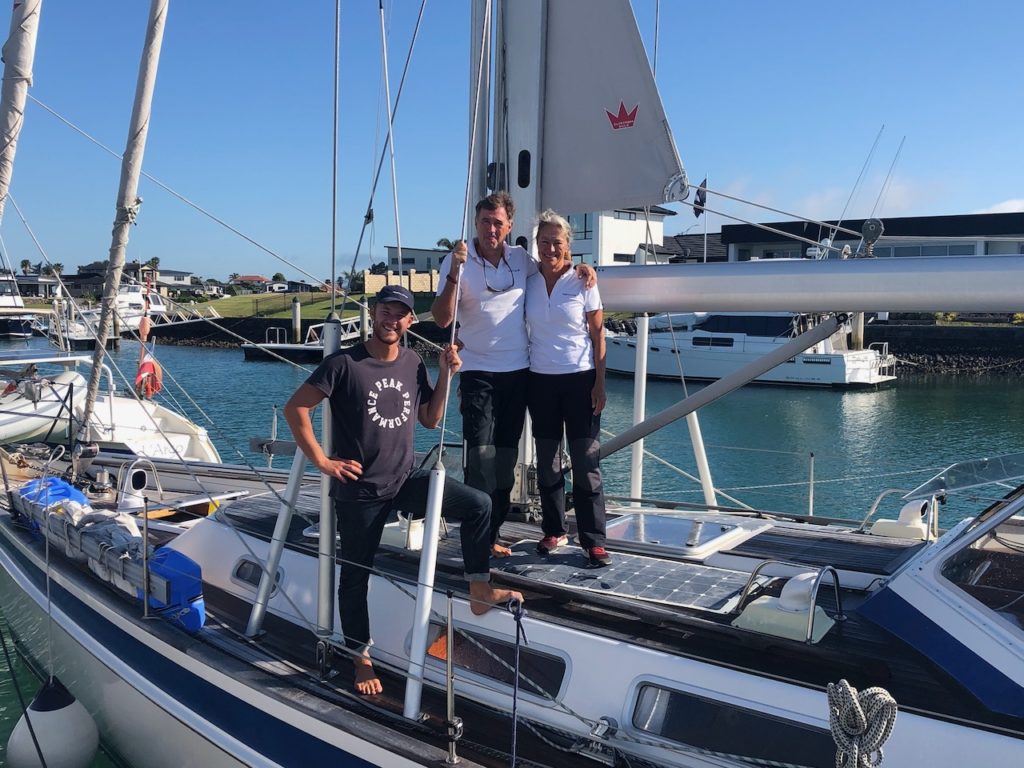

Now we are in Half Moon Bay Marina on the hard. North Star is really ready for loving and caring maintenance and Marie and I are looking forward to see our familie and friends.
